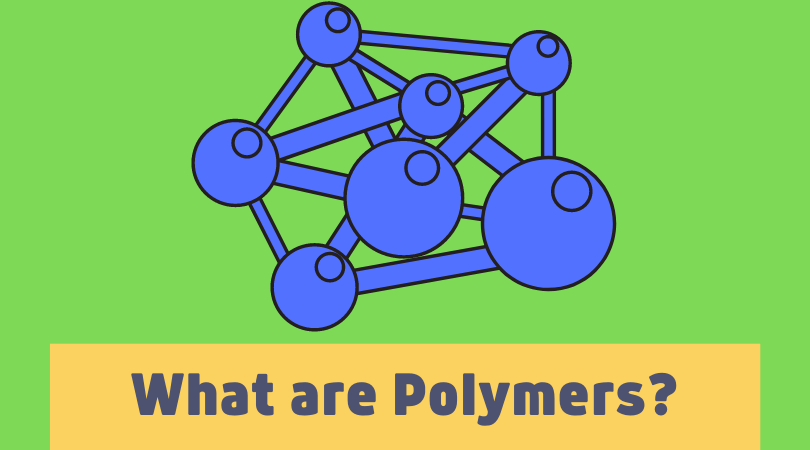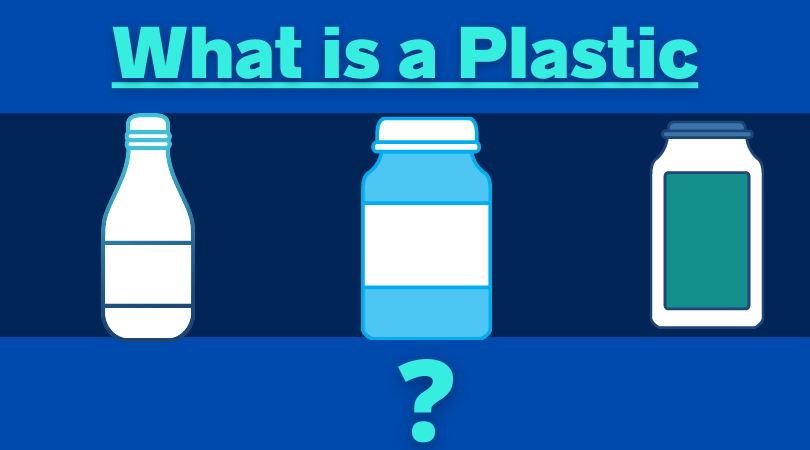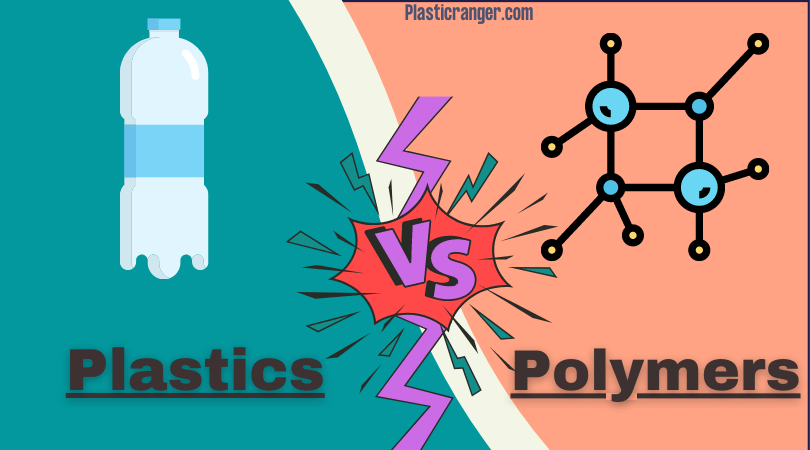Let’s delve into the ongoing confusion between plastic and polymers. Despite familiarity with these concepts, many struggle to differentiate between the two. This article aims to end the plastic versus polymer debate once and for all.
Plastics VS Polymers
Polymers may be found in nature or created synthetically, composed of sequences of monomers or singular molecules. Contrarily, plastics represent a distinct category of polymers, comprised of polymer chains that might be semi-organic or wholly synthetic. While all plastics fall under the category of polymers, it’s important to note that not every polymer qualifies as a plastic.
Polymers and plastics are often mistaken for being the same thing. Both terms are often used synonymously, but they are very different. Polymer plastic is used more extensively in our day-to-day lives than we realize, and they’ve acquired a non-replaceable part of our routine.
Let’s start with a detailed guide on the significant differences between plastics and polymers to understand their structure, properties, and applications.
Polymer VS Plastic: What are Polymers?

A polymer is a chemical compound comprising giant molecules or macromolecules composed of repeating subunits of endless interconnected links.
There are two types of polymers – natural and synthetic.
Both boast many properties used in our daily, mundane activities we don’t even bother noticing.
Natural Polymers or biopolymers range from wool, cotton, wool, DNA, proteins, etc.
Synthetic polymers range from Teflon, Polyethylene, nylon, polyester, epoxy, etc.
Synthetic polymers are classified into thermoplastics, thermosets, elastomers, and synthetic fibers.
- Thermoplastics: The main characteristic of any thermoplastic is that it can retain its properties even after prolonged exposure to heat. When heated to their melting point, thermoplastics melt rather than burn, which is perfect for shaping and molding.
- Thermosets: A thermoset, also known as a thermosetting polymer, becomes set in its physical and chemical properties after an initial treatment of heat, and that makes it unaffected by the additional heat exposure.
- Elastomers: Elastomers are elastic materials with low-strength molecular bonds and high flexibility. They are amorphous and lightly cross-linked with a glass transition temperature well below room temperature. The most famous examples are Thermoplastics elastomers, Acrylic Rubber, and Acrylic Ethylene Rubber.
The classification of a synthetic polymer is determined by its fundamental structure, physical properties, and applications.
There are thousands of polymers out there, so it is crucial to understand their attributes and uses to ensure they are used in suitable applications.
Structure
The molecular structure of a polymer can be described at various length scales, from the sub-nm length scale up to the macroscopic one.
To synchronize everything correctly, as a matter of fact, there is a hierarchy of structures in which each stage provides the foundation for the next one.
The starting tip of a polymer’s structure is its component monomer’s identity.
After that, the microstructure essentially represents the monomer sorting and arrangement within the polymer at the reach of a single chain.
The microstructure plays a crucial role in figuring out the possibility of a polymer to configure phases with different arrangements.
The molecular structure of a polymer decides the fundamental properties of the material. The following are the points crucial in classifying a particular polymer material.
Molecular bonds: The polymer structure heavily depends on how the monomers are linked or if there are no cross-branching bonds between polymer chains.
Monomer configuration: To better classify material, knowing which monomers make up the polymer chain, how many of each, and the nature of those monomers will play a vital role.
Chain attributes: The average length and weight of the chains in a polymer help determine the degree of polymerization and the molecular configuration of the polymer.
Polymerization method: The methods used to join the monomers into polymers decide the structure of the polymer, regardless of whether it is natural or synthetic polymerization, through using heat, condensation, or chemicals.
Properties
Let’s have a look at physical and chemical properties of polymers
Physical Properties
- Polymers don’t melt; they change state from crystalline to semi-crystalline.
- As the chain length and cross-linking increase, the tensile strength of the polymer also increases.
Chemical Properties
- Polymer is enabled with hydrogen bonding and ionic bonding resulting in superior cross-linked strength.
- Polymers with Van der Waals forces linking chains are weak, giving a polymer a low melting point.
Applications
Polymers are created by polymerization, and various polymers can be created through polymerization. That makes polymers useful in a wide array of applications.
- Thin Films and Sheets
- Elastomers
- Adhesives
- Formed and molded products
- Coatings, paints, and inks
- Yarns and other fibers
Engaging Read – UHMW Vs. Delrin: Which one is the Best?
Polymer VS Plastic: What are Plastics?

Plastics are synthetic polymers extracted from petroleum through polymerization or polycondensation process. Although polymers occur naturally, plastics are entirely man-made.
Plastics are all one kind of polymer with similar physical properties and versatility, making them useful in various applications.
They are classified into two main types – thermoplastics and thermosets.
Thermoplastics
Thermoplastics become liquid after being heated to their melting point, making them perfect for molding and shaping purposes.
What makes them so valuable is their ability to retain their properties even after consecutive heating sessions. Consistent reheating and reshaping don’t affect thermoplastic’s molecular makeup.
They are available in two forms – Amorphous and semi-crystalline.
Amorphous Thermoplastics: Amorphous thermoplastics comprise polymer chains that are not arranged in a particular fashion.
They are muddled up together in a very inconsistent and unorganized manner.
Amorphous thermoplastics have low heat resistance but are tough, rigid, and have low temperatures. Thanks to their lack of structure, they tend to be clear and transparent.
Semi-crystalline thermoplastics: Semicrystalline thermoplastics are compromised of polymer chains in a sophisticated and ordered manner or a crystalline structure mixed with amorphous areas.
The amount of crystalline or amorphous structure decides the physical characteristics of plastic.
The greater the crystalline structure, the more opaque the material becomes. Semi-crystalline thermoplastics show more impressive strength, heat resistance, stability, and chemical resistance than their amorphous equivalents.
Below are the most common thermoplastic materials:
- Polypropylene
- Polystyrene
- Nylon
- Acetals
- Polyethylene
- Acrylonitrile butadiene styrene (ABS)
- Polyvinyl chloride (PVC)
- Santoprene
- Thermoplastic olefins
- Acrylic
Thermoplastics owing to their impressive physical properties, are used in many applications. Here are some:
- Packaging materials
- Consumer goods
- Aerospace
- Automotive
- Pipes & Fittings
- Electrical & Electronics
- Medical Equipment
- Industrial Applications
The easily formable attributes of thermoplastic make them ideal for machining in processing techniques like Injection Molding, Blow molding, compression molding, thermoforming, ultrasonic welding, casting, sintering, and rotational molding.
Thermosets
Thermoset plastics are obtained by irreversibly curing a soft solid or resin. They are hardened by applying heat to a permanent design. Once shaped, thermosets remain in solid form even after being exposed to heat again. The high resistance to heat and corrosion makes thermosets useful in particular applications like precision components that will not change shape in extreme temperatures.
The most common thermosets include:
- Epoxy
- Phenolic
- Certain polyesters
- Polyurethane
Due to temperature temperature-withstanding nature, thermosets are used in applications such as:
- Electronic components
- Household appliances
- Lighting components
- Energy equipment
- Heat shields
- Motor parts and covers
Interesting Read – What is Anionic Polymerization? An In-Depth Analysis
FAQs

Explore the commonly asked questions below about plastic vs polymer to understand these materials better.
What are the 7 types of plastic?
Below are the 7 types of plastics:
1) Polyethylene Terephthalate (PETE)
2) High-Density Polyethylene (HDPE)
3) Polyvinyl Chloride (PVC – U)
4. Low-density polyethylene (LDPE)
5) Polypropylene (PP)
(6) Polystyrene or Styrofoam (PS)
7) OTHER.
What are the advantages of polymers?
The advantages are as follows:
- Cost-effective.
- More Chemical resistant than metals.
- No requirement for post-treatment finishing efforts
- 10 times lighter than typical material
- Fantastic thermal and electrical insulation properties
What are the disadvantages of polymers?
The disadvantages are as follows:
- It cannot be easily machined
- Low structural rigidity
- The strength-to-size ratio is less compared to metals.
- Meager heat withstanding capacity
Which country uses the most plastic?
The US and UK use more plastic and generate more plastic waste than any other country in the world.
Is recycled plastic safe?
It’s a prevalent thing to speculate, are recycled plastics safe for human usage? The answer is complicated. Recycled plastics make everything from soda and water bottles to plastic bags. Stuff made from type plastic, meaning PET, is considered fairly safe. However, it is also known to accumulate bacteria. Number 3 plastic or anything below is considered safe for us.
Suggested Read
- Step Growth vs Chain Growth Polymerization
- Antistatic vs. Static Dissipative Plastics | Which One to Choose?
- Food Grade Plastic: The Best Plastics for Food Applications
- When Was Plastic Invented? | The History of Plastics
- What is the Glass Transition Temperature of Plastics?
- What is PLA Plastic (Polylactide)? | A Simple and Definitive Guide
- ABS Vs PVC | The Complete Guide
- LDPE Vs HDPE: What are the Differences and Similarities
The Conclusion
That’s all I wanted to say about plastic vs polymer. In conclusion, they differ, while plastic and polymer are often used interchangeably. Polymers can occur naturally or be created synthetically, consisting of chains of monomers or individual molecules linked together.
On the other hand, plastics are a specific type of polymer made up of chains of polymers. Understanding the differences between these two materials is crucial to making informed decisions about their use and environmental impact.
I show my gratitude to everyone who is reading. Kindly share your thoughts and views on the article in the comment box.
Have a fantastic day.
Quick Navigation


nice information. Keep it up
Thanks